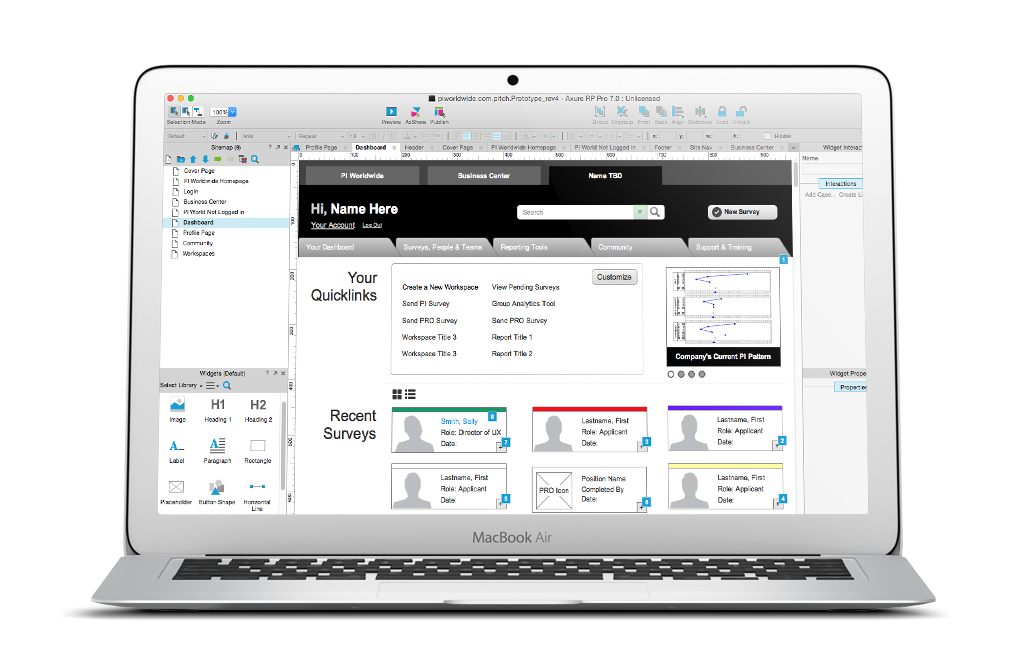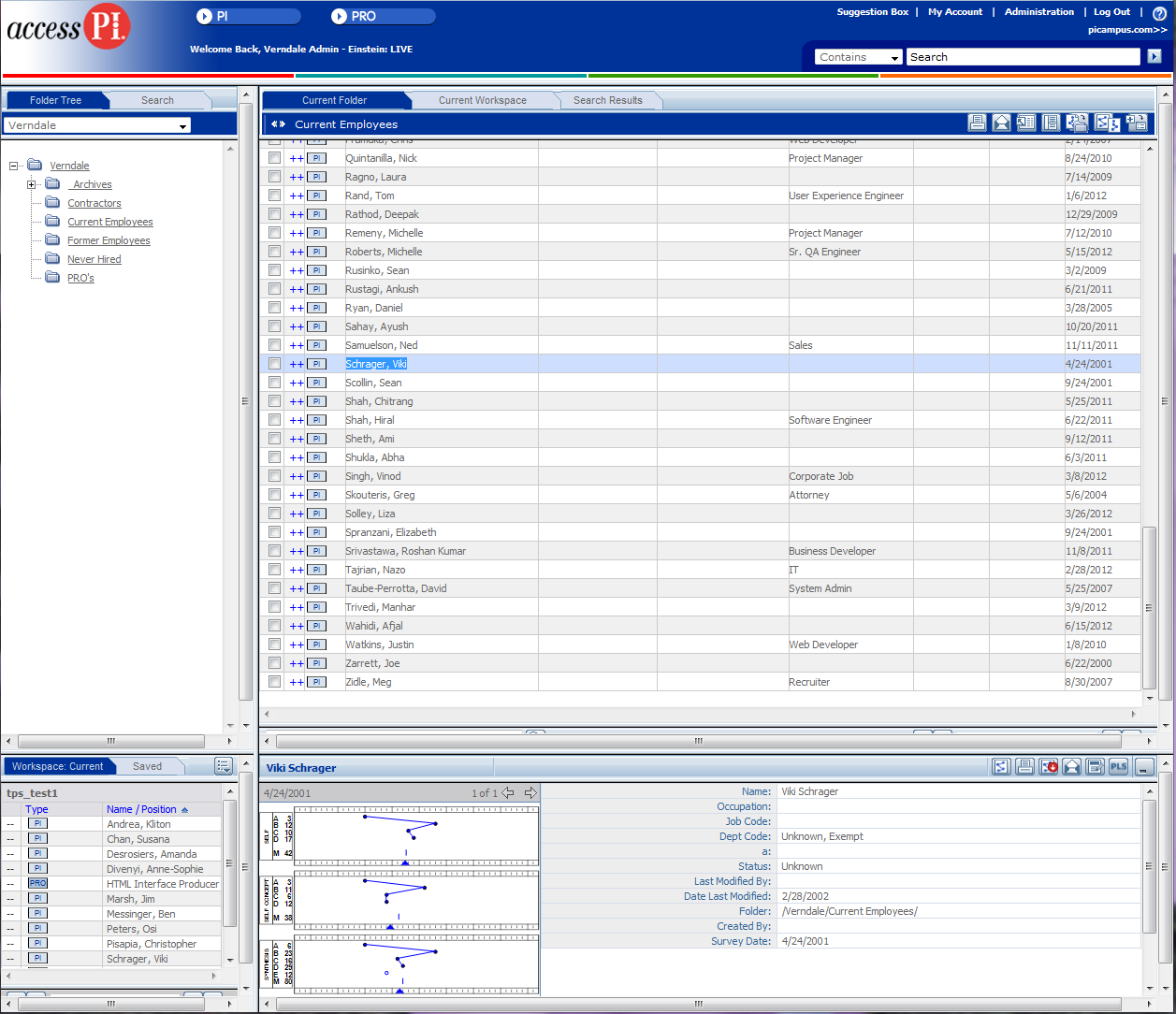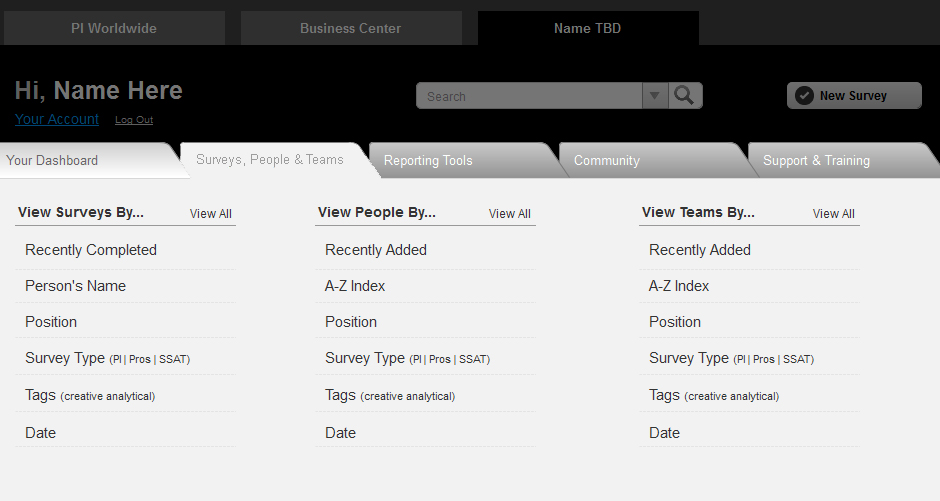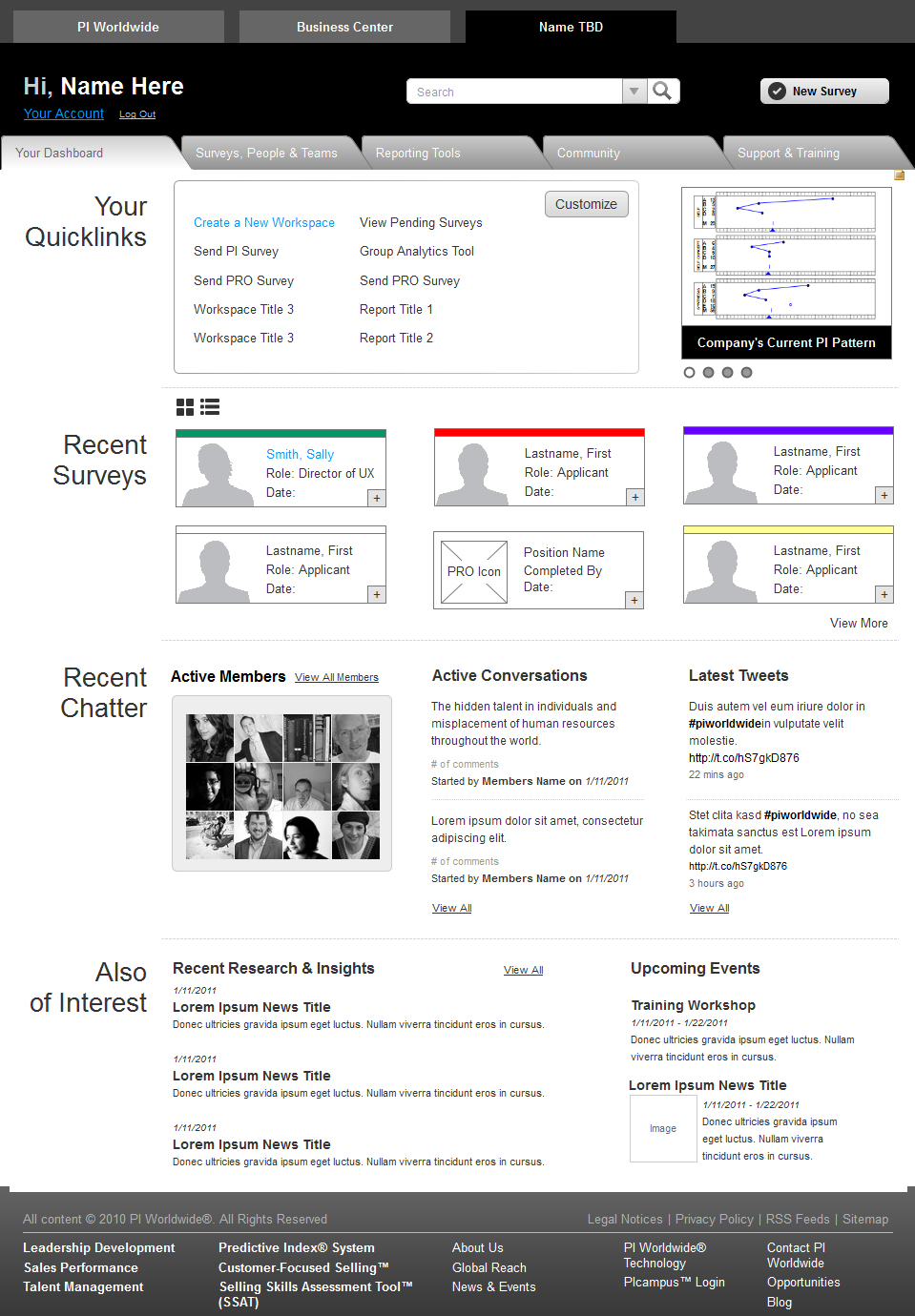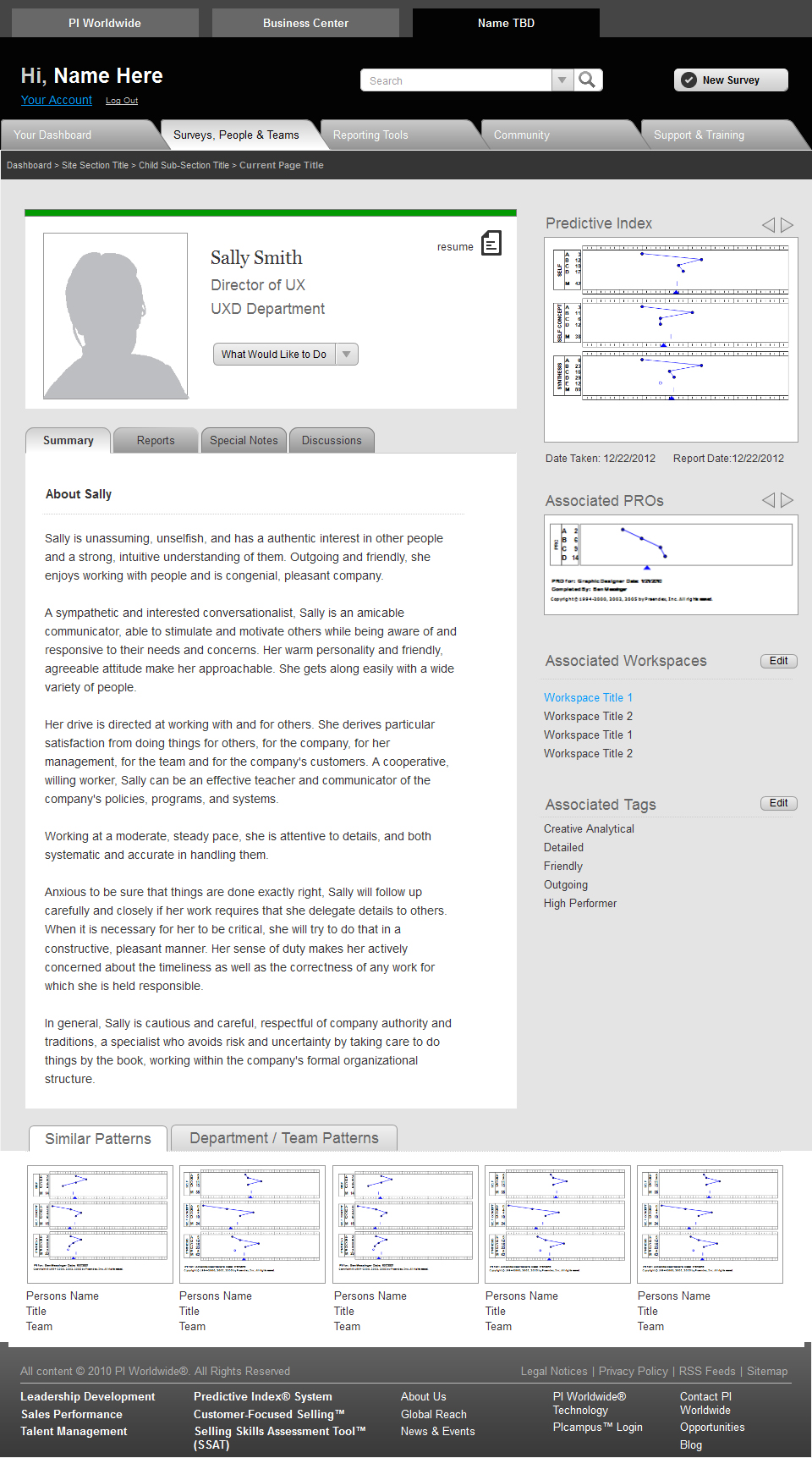PI Worldwide delivers human capital analytics (the Predictive Index) that help organizations make science-based decisions about their ultimate competitive advantage — their people.
I had worked with PI Worldwide on a variety of different initiatives over the years, and received a request that was more of a pitch than a project: Help PI consider an online strategic direction by “re-imagining” several of their products into one unified system — and prototype a future vision of what that unified system might look like.

